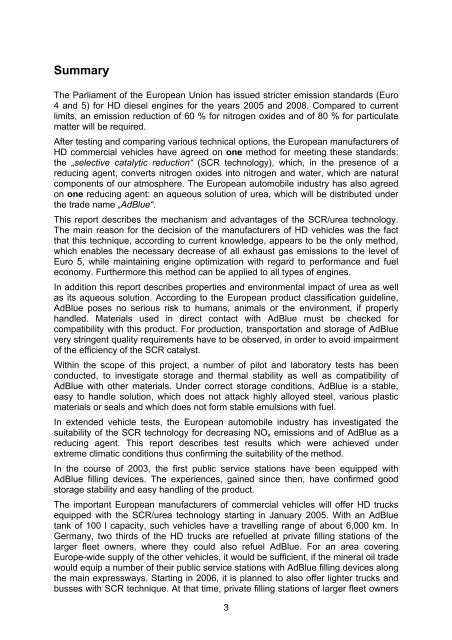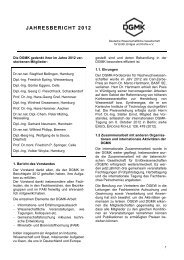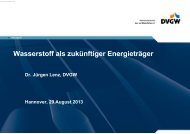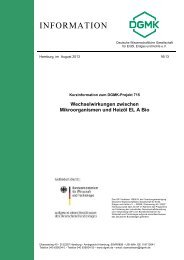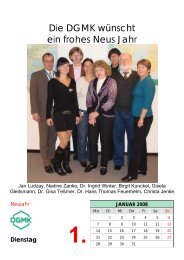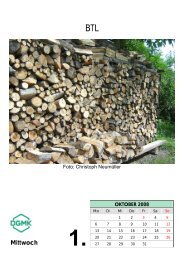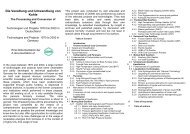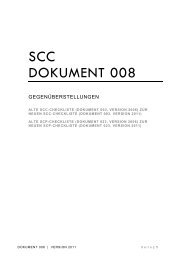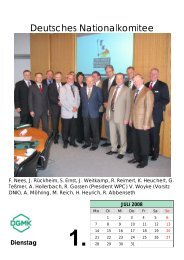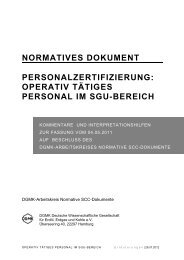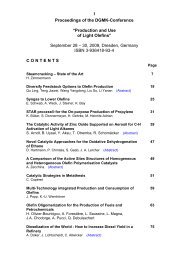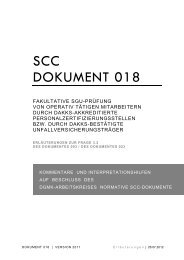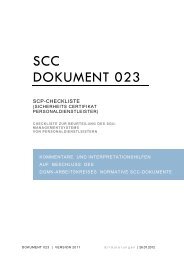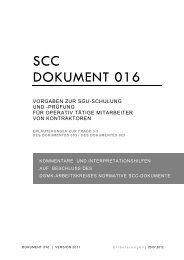D G M K Forschungsbericht 616-2
D G M K Forschungsbericht 616-2
D G M K Forschungsbericht 616-2
Sie wollen auch ein ePaper? Erhöhen Sie die Reichweite Ihrer Titel.
YUMPU macht aus Druck-PDFs automatisch weboptimierte ePaper, die Google liebt.
Summary<br />
The Parliament of the European Union has issued stricter emission standards (Euro<br />
4 and 5) for HD diesel engines for the years 2005 and 2008. Compared to current<br />
limits, an emission reduction of 60 % for nitrogen oxides and of 80 % for particulate<br />
matter will be required.<br />
After testing and comparing various technical options, the European manufacturers of<br />
HD commercial vehicles have agreed on one method for meeting these standards:<br />
the „selective catalytic reduction“ (SCR technology), which, in the presence of a<br />
reducing agent, converts nitrogen oxides into nitrogen and water, which are natural<br />
components of our atmosphere. The European automobile industry has also agreed<br />
on one reducing agent: an aqueous solution of urea, which will be distributed under<br />
the trade name „AdBlue“.<br />
This report describes the mechanism and advantages of the SCR/urea technology.<br />
The main reason for the decision of the manufacturers of HD vehicles was the fact<br />
that this technique, according to current knowledge, appears to be the only method,<br />
which enables the necessary decrease of all exhaust gas emissions to the level of<br />
Euro 5, while maintaining engine optimization with regard to performance and fuel<br />
economy. Furthermore this method can be applied to all types of engines.<br />
In addition this report describes properties and environmental impact of urea as well<br />
as its aqueous solution. According to the European product classification guideline,<br />
AdBlue poses no serious risk to humans, animals or the environment, if properly<br />
handled. Materials used in direct contact with AdBlue must be checked for<br />
compatibility with this product. For production, transportation and storage of AdBlue<br />
very stringent quality requirements have to be observed, in order to avoid impairment<br />
of the efficiency of the SCR catalyst.<br />
Within the scope of this project, a number of pilot and laboratory tests has been<br />
conducted, to investigate storage and thermal stability as well as compatibility of<br />
AdBlue with other materials. Under correct storage conditions, AdBlue is a stable,<br />
easy to handle solution, which does not attack highly alloyed steel, various plastic<br />
materials or seals and which does not form stable emulsions with fuel.<br />
In extended vehicle tests, the European automobile industry has investigated the<br />
suitability of the SCR technology for decreasing NOx emissions and of AdBlue as a<br />
reducing agent. This report describes test results which were achieved under<br />
extreme climatic conditions thus confirming the suitability of the method.<br />
In the course of 2003, the first public service stations have been equipped with<br />
AdBlue filling devices. The experiences, gained since then, have confirmed good<br />
storage stability and easy handling of the product.<br />
The important European manufacturers of commercial vehicles will offer HD trucks<br />
equipped with the SCR/urea technology starting in January 2005. With an AdBlue<br />
tank of 100 l capacity, such vehicles have a travelling range of about 6,000 km. In<br />
Germany, two thirds of the HD trucks are refuelled at private filling stations of the<br />
larger fleet owners, where they could also refuel AdBlue. For an area covering<br />
Europe-wide supply of the other vehicles, it would be sufficient, if the mineral oil trade<br />
would equip a number of their public service stations with AdBlue filling devices along<br />
the main expressways. Starting in 2006, it is planned to also offer lighter trucks and<br />
busses with SCR technique. At that time, private filling stations of larger fleet owners<br />
3


